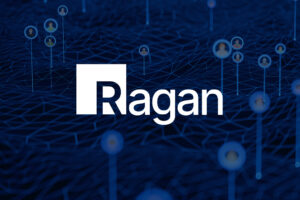Why inclusive mental health language matters in the workplace
Many organizations are changing the way they talk and write about mental health. Here’s why you should, too.

It may seem like a harmless figure of speech or creative, clever hyperbole, but misusing mental health language can be harmful and non-inclusive. We’ve all heard it, maybe even said it:
- “Last night’s episode made me so depressed,”
- “I like my desk set up like this, I’m so OCD.”
- “I still have PTSD from that.”
The use of mental health language to describe everyday—and sometimes undesirable—behaviors trivializes and stigmatizes the real-life experience of people living with a mental health disorder.
Mental health language is an important consideration in building inclusive workplaces. Here are five considerations to keep in mind:
1. Mental health disorders are more prevalent than you might think.
According to the 2019 National Survey of Drug Use and Health, an estimated 20% of adults in the U.S. live with a mental health disorder (51.5 million).
That means that one in five people you know, meet or encounter might be living with a mental health disorder—and you have a one in five chance of making someone feel uncomfortable, alienated or offended with non-inclusive mental health language.
2. We react to words without realizing it.
Words are powerful; we know this. The very first line of a paragraph can open minds or close them off to the rest of the message. This happens because, in an effort to make sense of the flood of information we encounter each day, our brains naturally make snap decisions to categorize and make connections to ideas, feelings, and experiences we have stored in our memories. This process happens all the time, with such little effort that it often goes unnoticed.
The continued misuse of mental health language strengthens these associations and strengthens habits that further trivialize mental health, making discrimination and stigma subconsciously more acceptable.
3. Inclusive language is forward-thinking and, well, inclusive.
Learning and re-learning how to use words is something we’ve done all our lives. Just think about terms like “followers” and “going live” that were virtually nonexistent ten years ago; now, we use or encounter these almost daily. Keeping up with the latest lingo helps us stay informed about current trends and connected to others.
Being inclusive can also affect a company’s talent pool and appeal to prospective employees. More and more, a diverse and inclusive workplace is seen as a requirement for the upcoming wave of young talent who are seeking job opportunities, and organizations are increasingly recognizing the intersectionality of mental health and diversity, equity and inclusion (DEI). So, using words like “psychotic” to describe something that is erratic is not only stigmatizing, but also alienating and outdated.
4. Misusing mental health language is lazy communication.
Using mental health language is not the best way to describe what you mean. Consider the word “crazy.” It is convenient and common enough, but why settle for a catch-all when you can be specific? We can do better than to lean on overused and unremarkable words like “crazy,” when we really mean “passionate,” “silly” or “immense.”
Another example is the outdated use of “OCD” to describe the tendency to be neat and tidy. This is an oversimplification of the complexities of living with obsessive compulsive disorder (OCD). OCD is characterized by intrusive, irrational and uncontrollable thoughts (obsessions) that trigger disruptive, repetitive behaviors (compulsions) and has little to do with being a perfectionist.
5. Inclusive language creates connections, not guardrails.
It’s very important to note that inclusive language is not the same as being politically correct. A recent Right Track Learning study revealed that 51% of people associate “equality, diversity & inclusion” with “political correctness.” However, there is an important distinction between the two. The objective of political correctness is to not offend, thereby using rules and barriers to mitigate and avoid impact.
The focus on inclusive language aims to honor people’s personal identities, a process that takes time, effort and a genuine interest in making others feel like they belong. Instead of rules, inclusive language is built on a foundation of open dialogue, continuous education and flexibility in the way we connect with others.
Nicole Ng is a project specialist with Brilliant Ink.






